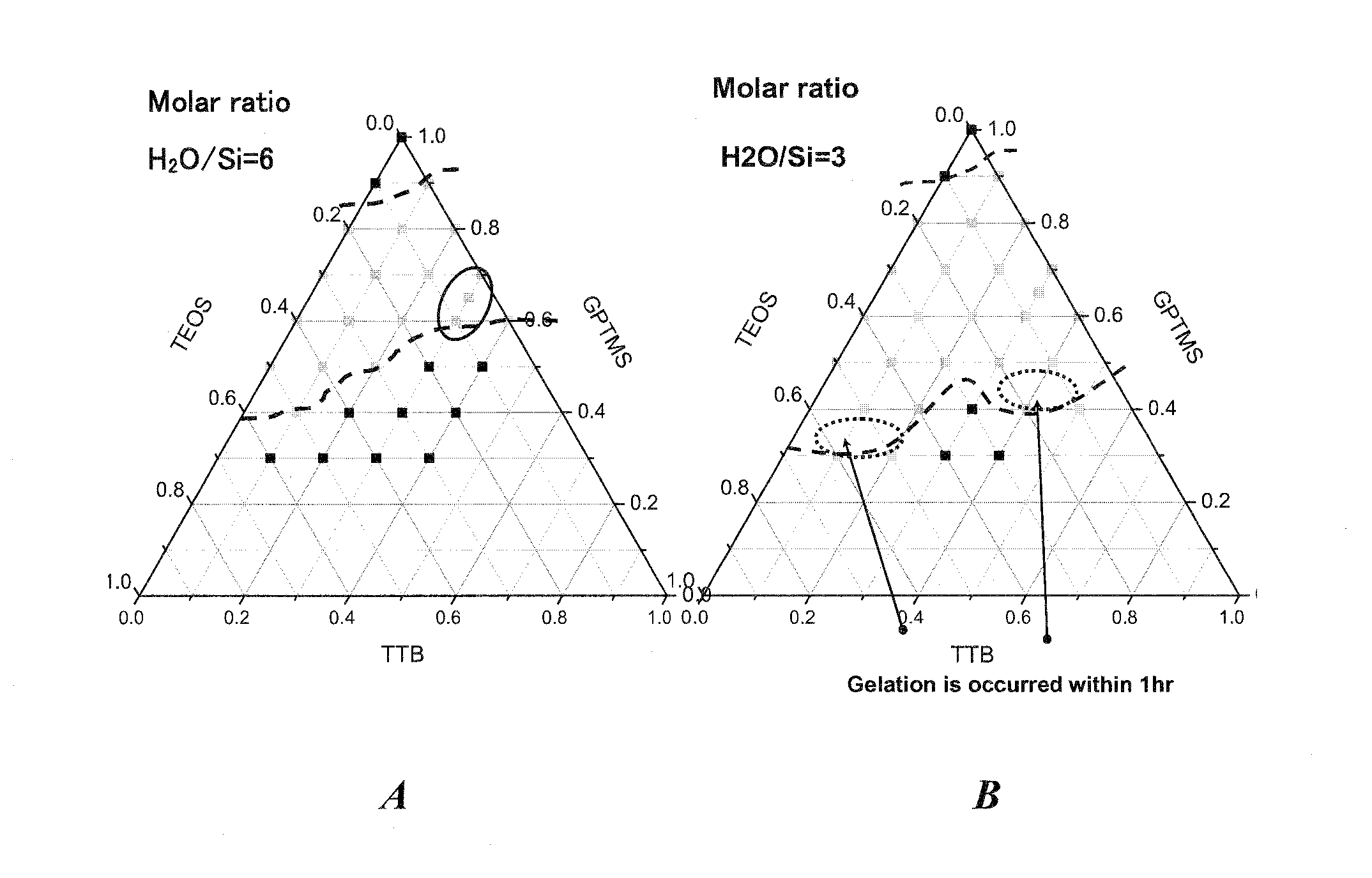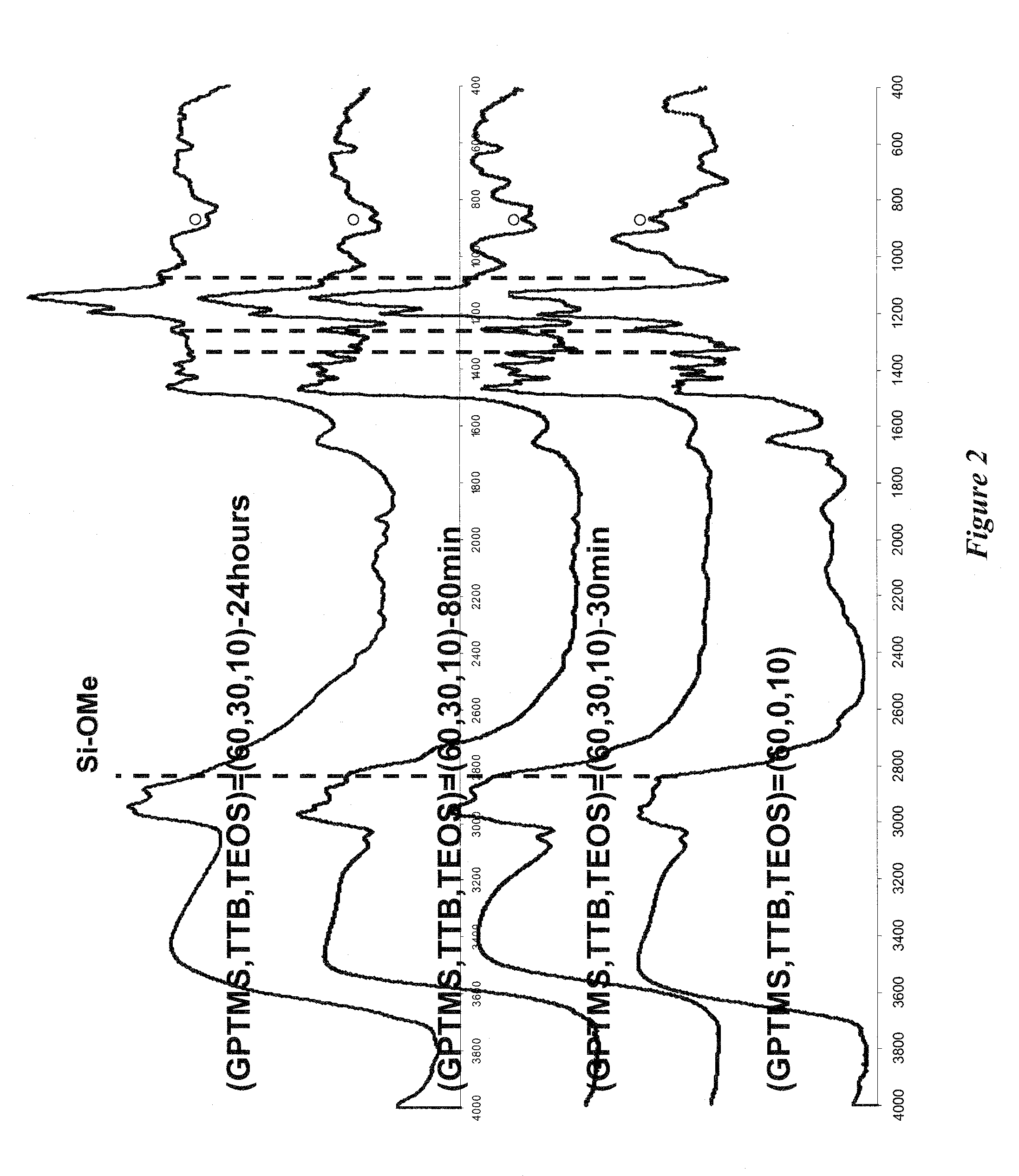Nanoparticle sol-gel composite hybrid transparent coating materials
a composite and hybrid technology, applied in the direction of silicon oxide, liquid/solution decomposition chemical coating, transportation and packaging, etc., can solve the problems of sol-gel derived coatings that are not hard or durable, easy to scratch, etc., and achieve effective diffusion barrier for oxygen and water and high transparency
- Summary
- Abstract
- Description
- Claims
- Application Information
AI Technical Summary
Benefits of technology
Problems solved by technology
Method used
Image
Examples
Embodiment Construction
[0019]Embodiments of the invention are directed to novel hard transparent coatings for plastics, other organic substrates, or other substrates, such as metals, that can be fabricated without the use of vacuum techniques and can be cured without the need of temperatures in excess of a temperature where deformation of the substrate can occur. The novel coatings involve formation of a composite hybrid coating comprising nanoparticles of less than 100 nm in diameter that are suspended without the significant aggregation that can lead to the loss of transparency at a high solids loading in a sol-gel derived matrix. The cured coating can be applied as a single coating layer to a thickness in excess of 5 μm, yet still display a transparency of more than 95% to visible light, and having no cracks or other discernable defects. Water permeability of less than 0.1 g / m2 / d are formed upon curing the coating.
[0020]The novel composite hybrid coatings are formed from the hydrolysis and condensation...
PUM
| Property | Measurement | Unit |
|---|---|---|
| Temperature | aaaaa | aaaaa |
| Length | aaaaa | aaaaa |
| Fraction | aaaaa | aaaaa |
Abstract
Description
Claims
Application Information
 Login to View More
Login to View More - R&D
- Intellectual Property
- Life Sciences
- Materials
- Tech Scout
- Unparalleled Data Quality
- Higher Quality Content
- 60% Fewer Hallucinations
Browse by: Latest US Patents, China's latest patents, Technical Efficacy Thesaurus, Application Domain, Technology Topic, Popular Technical Reports.
© 2025 PatSnap. All rights reserved.Legal|Privacy policy|Modern Slavery Act Transparency Statement|Sitemap|About US| Contact US: help@patsnap.com



